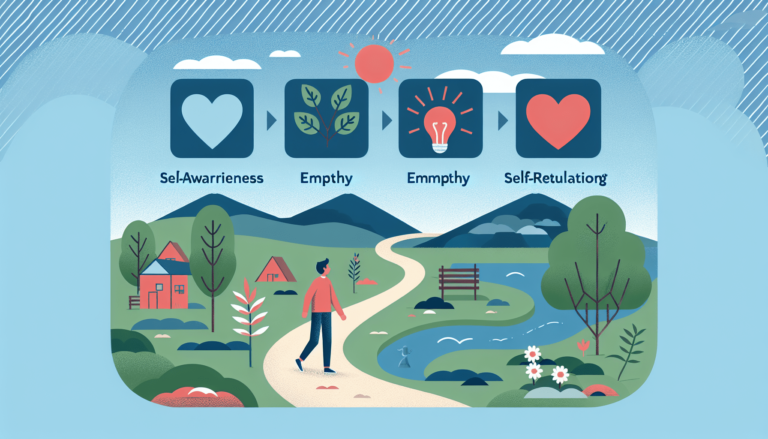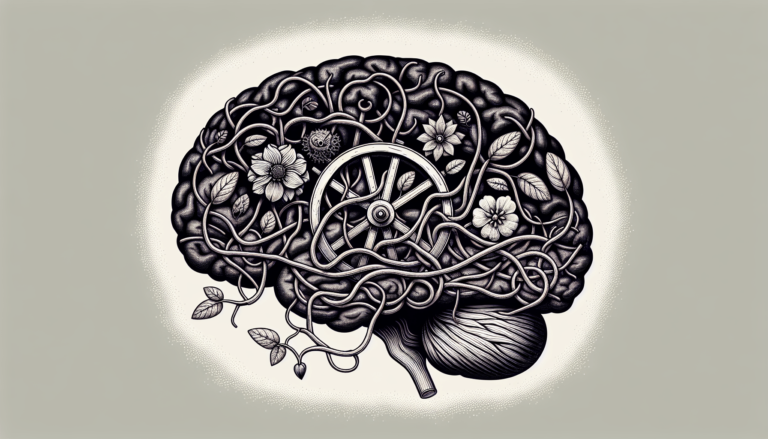The Science Behind Motivation And How To Harness It
Motivation is a powerful force that drives us to achieve our goals and fulfill our dreams. We all desire to be motivated, but have you ever wondered what exactly fuels that inner fire? In this article, we will explore the fascinating science behind motivation and delve into practical tips on how to harness it effectively. Understanding the mechanisms that ignite our drive can unlock new levels of productivity, happiness, and success in both our personal and professional lives. So, grab a cup of coffee and get ready to uncover the secrets of motivation.
What is Motivation?
Motivation is the driving force behind our behaviors, thoughts, and actions. It is what keeps us focused, determined, and willing to persevere towards our goals. Without motivation, it would be challenging to find the energy and enthusiasm needed to accomplish anything significant in life. Understanding motivation is essential for personal growth, success, and fulfillment. In this article, we will explore the various aspects of motivation, including its definition, types, theories, and practical strategies to harness and maintain it.
Definition of motivation
Motivation can be defined as the internal or external forces that initiate, guide, and sustain behaviors towards achieving a goal. It is the desire and willingness to act in a certain way to attain specific outcomes or rewards. Motivation can stem from various sources, such as personal values, needs, emotions, social interactions, or incentives. It serves as the engine that propels individuals towards taking action and exerting effort to pursue their aspirations.
Types of motivation
Motivation can be broadly categorized into two types: intrinsic and extrinsic motivation.
Intrinsic motivation
Intrinsic motivation refers to the internal factors that drive individuals to engage in an activity for its inherent satisfaction or enjoyment. It is prompted by personal interest, curiosity, or the desire to fulfill one’s sense of competence, autonomy, or self-determination. Examples of intrinsic motivation include pursuing a hobby, engaging in creative endeavors, or learning for the sake of personal growth.
Extrinsic motivation
Extrinsic motivation, on the other hand, involves engaging in a behavior to obtain external rewards or avoid punishment. These rewards can be tangible, such as money, recognition, or prizes, or intangible, such as praise, approval, or social status. Extrinsic motivation can influence individuals to perform tasks that they may not find inherently enjoyable, with the aim of obtaining the external incentives associated with the behavior.
While both intrinsic and extrinsic motivation play a crucial role in driving behaviors, the balance between the two can vary depending on the individual and the context. It is important to understand the benefits and drawbacks of each type and find a healthy balance to maintain sustained motivation.
Theories of Motivation
To gain a deeper understanding of motivation, several psychological theories have been developed over the years. These theories aim to explain the factors that drive human behavior and provide insights into how motivation can be effectively harnessed. In this section, we will explore three prominent theories of motivation: Maslow’s Hierarchy of Needs, Herzberg’s Two-Factor Theory, and Expectancy Theory.
Maslow’s Hierarchy of Needs
Maslow’s Hierarchy of Needs proposes that individuals are motivated by a hierarchical arrangement of needs, ranging from basic physiological needs to higher-level psychological needs. According to Maslow, individuals must fulfill lower-level needs (such as food, shelter, and safety) before moving on to higher-level needs (such as belongingness, self-esteem, and self-actualization). This theory suggests that as each need is met, individuals are motivated to pursue the next level of needs until reaching self-actualization – the highest level of human potential.
Understanding this theory can help individuals identify and prioritize their needs, ensuring that they address the most pressing ones first. By satisfying these fundamental needs, individuals create a strong foundation for motivation and personal growth.
Herzberg’s Two-Factor Theory
Herzberg’s Two-Factor Theory distinguishes between factors that contribute to job satisfaction and those that lead to job dissatisfaction. According to Herzberg, there are hygiene factors, which, when absent, can cause dissatisfaction, and motivators, which, when present, can lead to satisfaction and motivation. Hygiene factors include aspects such as working conditions, salary, and company policies, which, if inadequate, can demotivate individuals. Motivational factors, on the other hand, involve aspects such as recognition, achievement, and personal growth, which can positively influence motivation and job satisfaction.
By understanding this theory, organizations and individuals can focus on improving motivators and addressing hygiene factors to create a work environment that fosters motivation and satisfaction.
Expectancy Theory
Expectancy Theory emphasizes the importance of an individual’s beliefs about their ability to perform a task, the likelihood of receiving desired outcomes, and the value they place on those outcomes. According to this theory, individuals assess the effort-to-performance expectancy (the belief that effort will lead to successful performance), the performance-to-outcome expectancy (the belief that performance will result in desired outcomes), and the outcome valence (the value individuals place on the outcomes). The interaction of these factors influences an individual’s motivation to engage in a specific behavior.
Understanding the expectancy theory can help individuals and organizations tailor tasks, set realistic expectations, and provide appropriate rewards and incentives to maximize motivation and performance.

The Role of Dopamine
Dopamine, a neurotransmitter in the brain, plays a crucial role in motivation and reward-seeking behavior. It is often referred to as the “feel-good” chemical as it contributes to pleasurable sensations, reinforcement, and motivation. In this section, we will explore the connection between dopamine and motivation.
Understanding dopamine
Dopamine is a chemical messenger produced by the brain that transmits signals between neurons. It is involved in various cognitive and emotional functions, including motivation, reward, learning, and decision-making. Dopamine helps regulate the brain’s reward and pleasure centers, reinforcing behaviors that are perceived as rewarding and encouraging individuals to pursue activities that provide a dopamine release.
Dopamine’s connection to motivation
Research suggests that dopamine levels increase in response to rewarding stimuli or experiences. When individuals encounter a situation that they perceive as rewarding or exciting, dopamine is released, creating a sense of pleasure and reinforcing the motivation to seek similar rewards in the future. This mechanism explains why individuals feel a sense of satisfaction and accomplishment when they achieve their goals or receive positive feedback.
Understanding the role of dopamine in motivation can help individuals create environments, set goals, and structure tasks in ways that activate the brain’s reward systems. By incorporating elements that stimulate dopamine release, individuals can enhance their motivation and experience a greater sense of satisfaction and fulfillment.
Intrinsic vs Extrinsic Motivation
Intrinsic and extrinsic motivation have distinct characteristics and implications for behavior and performance. In this section, we will define these two types of motivation and explore their benefits and drawbacks.
Definition of intrinsic motivation
Intrinsic motivation refers to the internal drive and enjoyment individuals experience when engaging in an activity for its inherent satisfaction or interest. It arises from personal interest, curiosity, or the desire to master a skill. Intrinsic motivation is fueled by an individual’s sense of autonomy, competence, and the pleasure derived from the activity itself, rather than external rewards.
Definition of extrinsic motivation
Extrinsic motivation involves engaging in a behavior to obtain external rewards or avoid punishment. It is driven by the desire for tangible or intangible rewards, such as money, recognition, social approval, or praise. Extrinsic motivators serve as external incentives to encourage individuals to perform tasks that they may not find intrinsically motivating.
Benefits and drawbacks of each
Intrinsic motivation has several benefits. Individuals who are intrinsically motivated tend to have a greater sense of personal satisfaction, persistence, and creativity. They are more likely to fully engage in the activity, experience a sense of flow, and achieve higher levels of performance. Intrinsic motivation also promotes long-term interest and personal growth.
Extrinsic motivation, on the other hand, can help individuals complete tasks that they may find uninteresting or challenging. External rewards and incentives can provide tangible benefits and reinforce desired behaviors. However, relying solely on extrinsic motivation can lead to a dependence on external rewards and diminish intrinsic motivation over time. It is important to strike a balance and foster intrinsic motivation alongside appropriate extrinsic incentives.
Understanding the benefits and drawbacks of each type of motivation can help individuals tailor their approach to tasks, ensuring a healthy blend of internal and external motivation to maximize engagement and performance.

Setting Goals for Motivation
Setting clear and meaningful goals is crucial for motivation and achievement. Goals provide individuals with direction, focus, and a sense of purpose. In this section, we will explore the importance of setting goals, introduce the SMART goal-setting framework, and discuss the significance of tracking progress.
The importance of setting goals
Goals serve as a compass, guiding individuals towards their desired outcomes. They provide clarity and help individuals prioritize their efforts and resources effectively. Setting goals gives individuals a sense of purpose and creates a roadmap for success.
When individuals have clear goals, they are more likely to remain motivated and committed to their pursuits. Goals also enable individuals to break down complex tasks into manageable steps, making them less overwhelming and more achievable. By setting goals, individuals can channel their motivation and energy towards specific targets, making progress more tangible and providing a sense of fulfillment along the way.
SMART goal-setting framework
The SMART goal-setting framework provides a structured approach to setting goals that are specific, measurable, achievable, relevant, and time-bound. This framework enhances the effectiveness of goal setting by ensuring that goals are well-defined and aligned with an individual’s capabilities, values, and aspirations.
- Specific: Goals should be clear, concise, and well-defined. They should answer the questions of what you want to achieve and why it is important to you.
- Measurable: Goals should be quantifiable to track progress and evaluate success. Establishing concrete criteria or metrics allows individuals to assess their performance objectively.
- Achievable: Goals should be realistic and attainable based on an individual’s resources, skills, and circumstances. Setting challenging yet achievable goals promotes motivation and prevents discouragement.
- Relevant: Goals should be meaningful and aligned with an individual’s values, priorities, and long-term aspirations. They should contribute to personal growth and fulfillment.
- Time-bound: Goals should have a specific timeline or deadline. Setting deadlines creates a sense of urgency and helps individuals stay focused and committed to their objectives.
By applying the SMART goal-setting framework, individuals can enhance their motivation, maintain clarity, and increase the likelihood of successful goal attainment.
Tracking progress
Tracking progress is an essential component of maintaining motivation. Regularly monitoring and reviewing progress allows individuals to stay accountable, identify areas for improvement, and celebrate milestones along the way. Tracking progress provides tangible evidence of the effort invested and the progress made, reinforcing motivation and providing a sense of accomplishment.
Various methods can be employed to track progress, such as journaling, using task management tools or apps, creating visual representations, or seeking feedback from mentors or peers. The chosen tracking method should align with an individual’s preferences and serve as a reliable source of motivation and guidance.
By consistently tracking progress, individuals can identify trends, make necessary adjustments, and sustain their motivation over time, leading to continued growth and achievement.
Creating a Motivating Environment
The environment in which individuals work or reside plays a significant role in fostering motivation. A motivating environment provides the necessary support, resources, and conditions to enhance engagement, productivity, and overall well-being. In this section, we will explore strategies to optimize the workspace, promote autonomy, and encourage social connections to create a motivating environment.
Optimizing workspace
The physical environment can have a profound impact on individuals’ motivation and performance. An organized, clutter-free, and aesthetically pleasing workspace can help reduce distractions, enhance focus, and create a sense of calm. Personalizing the workspace with meaningful items, such as photographs or inspiring quotes, can evoke positive emotions and a sense of belonging.
Additionally, ensuring that the workspace is well-equipped with necessary tools, technology, and resources can enhance efficiency and reduce frustration. Adequate lighting, comfortable seating, and proper ergonomics are also crucial for maintaining physical well-being and sustained motivation.
Promoting autonomy
Autonomy, or the sense of control and independence, is a powerful motivator. When individuals feel empowered to make decisions, have flexibility in their work, and have a sense of ownership over their tasks, they are more likely to be motivated, engaged, and innovative.
Promoting autonomy can be achieved by delegating responsibility, encouraging individuals to take on leadership roles, involving them in decision-making processes, and providing opportunities for creative problem-solving. Building trust and providing support, while giving individuals the freedom to learn from their mistakes, can also foster a motivating environment.
Encouraging social connections
Humans are inherently social beings, and social connections have a significant impact on motivation and well-being. Creating opportunities for positive social interactions, such as team-building activities, collaborative projects, or social events, fosters a sense of belonging and promotes motivation.
Encouraging open communication and establishing a supportive and inclusive work culture also contribute to a motivating environment. When individuals feel heard, valued, and connected to others, they are more likely to be motivated, engaged, and satisfied in their work.
By optimizing the workspace, promoting autonomy, and nurturing social connections, individuals can create an environment that fuels motivation, productivity, and overall happiness.
Building Motivation in Others
Motivation is not limited to individual achievement; it also plays a crucial role in inspiring and empowering others. As leaders, managers, or mentors, it is vital to understand how to build and sustain motivation in others. In this section, we will explore strategies such as leading by example, providing feedback and recognition, and creating a positive work culture to promote motivation in others.
Leading by example
Effective leadership involves modeling the behaviors and attitudes that inspire and motivate others. Leading by example sets a positive tone and reinforces the desired behaviors and values. When individuals witness leaders who are passionate, driven, and committed to their goals, they are more likely to mirror those behaviors and feel inspired to achieve similar levels of motivation and success.
Leading by example also involves demonstrating authenticity, empathy, and resilience. By openly sharing experiences, challenges, and successes, leaders create a sense of connection and trust, which can motivate and empower others.
Providing feedback and recognition
Feedback and recognition are powerful tools for building and sustaining motivation. Constructive feedback provides individuals with valuable insights into their strengths and areas for improvement, fostering personal growth and development. By offering specific and timely feedback, leaders can guide individuals towards higher levels of performance and motivate them to continue growing.
Equally important is the recognition of accomplishments and contributions. Recognizing and celebrating achievements, both big and small, acknowledges individuals’ efforts and motivates them to maintain their high levels of performance.
Creating a positive work culture
The work culture within an organization significantly impacts motivation and overall employee satisfaction. A positive work culture is characterized by trust, respect, collaboration, and open communication. When individuals feel valued, supported, and included, they are more likely to be motivated, engaged, and committed to their work.
Creating a positive work culture involves fostering a sense of belonging, promoting work-life balance, and providing opportunities for growth and development. Encouraging innovation, allowing for autonomy, and recognizing the significance of work-life integration can contribute to a motivating environment where individuals thrive.
By leading by example, providing feedback and recognition, and creating a positive work culture, leaders can inspire and empower others to reach their full potential and excel in their endeavors.
The Power of Incentives
Incentives, both intrinsic and extrinsic, can be powerful motivators. Rewards and recognition for achievements can enhance performance, engagement, and satisfaction. In this section, we will explore different types of incentives, discuss strategies for designing effective reward systems, and identify incentive pitfalls to avoid.
Types of incentives
Incentives can take various forms and can be tailored to individual preferences and goals. Some common types of incentives include:
- Financial rewards: Monetary compensation, bonuses, or raises.
- Non-financial rewards: Recognition, praise, awards, or certificates.
- Promotional opportunities: Advancement within an organization, increased responsibilities, or career development opportunities.
- Tangible rewards: Gifts, prizes, or tokens of appreciation.
- Time-based incentives: Flexibility in work schedules, extended breaks, or time off.
- Learning and development incentives: Training programs, mentorship, or educational opportunities.
Choosing the right combination of incentives based on individual preferences, goals, and organizational culture is crucial for maintaining motivation and satisfaction.
Designing effective reward systems
Designing effective reward systems involves considering several factors. Firstly, rewards should be aligned with an individual’s efforts and achievements. Recognizing and rewarding both small and significant accomplishments can provide a continuous source of motivation and reinforce desired behaviors.
Secondly, rewards should be perceived as fair and equitable. Inequity can demotivate individuals or create a sense of competition instead of collaboration. Ensuring transparency, consistency, and clear criteria for reward allocation can prevent potential conflicts and enhance motivation.
Lastly, rewards should be meaningful and aligned with individuals’ desires and aspirations. Understanding what motivates individuals and tailoring incentives to their preferences can significantly enhance motivation and engagement.
Incentive pitfalls to avoid
While incentives can be powerful motivators, there are potential pitfalls that need to be avoided. Overreliance on extrinsic rewards can dilute intrinsic motivation and create a dependency on external incentives. Additionally, poorly designed reward systems that lack objective criteria or fairness can lead to dissatisfaction and demotivation.
It is essential to strike a balance between intrinsic and extrinsic motivators, ensuring that individuals are intrinsically motivated by the task itself and supported by appropriate extrinsic incentives. Understanding the potential drawbacks and actively addressing them can help create a balanced and effective incentive system.
Maintaining Motivation
Motivation is not always a constant state; it can fluctuate over time. To maintain motivation, individuals need to employ various strategies that align with their goals, needs, and circumstances. In this section, we will explore techniques such as using rewards and punishments, breaking tasks into smaller steps, and utilizing visualization techniques.
Using rewards and punishments
Reward and punishment systems can be effective tools for maintaining motivation, particularly when used judiciously. Setting up a system where individuals receive rewards for meeting specific milestones or achieving goals can provide a sense of progress and reinforcement. Rewards can act as positive feedback and serve as a tangible reminder of the effort invested.
At the same time, the possibility of experiencing negative consequences or receiving punishments for not meeting expectations can create a sense of accountability and urgency. However, it is important to employ punishments cautiously, as they can have adverse effects on intrinsic motivation and overall well-being. Punishments should be fair, reasonable, and used as a last resort.
Breaking tasks into smaller steps
Large, complex tasks can feel overwhelming and demotivating. Breaking tasks into smaller, more manageable steps can make them less intimidating and facilitate a sense of progress. By focusing on accomplishing each individual step, individuals can maintain their motivation and momentum.
Additionally, celebrating the completion of each small step can act as positive reinforcement and provide a sense of accomplishment, further fueling motivation.
Utilizing visualization techniques
Visualization is a powerful technique that can enhance motivation and help individuals stay focused on their goals. By vividly imagining the successful completion of a task, or visualizing themselves achieving a desired outcome, individuals can create a compelling mental image that reinforces motivation and boosts self-confidence.
Visualization techniques involve actively engaging the senses, emotions, and beliefs, and can be supported by techniques such as affirmations, goal visualization boards, or guided imagery exercises. Utilizing visualization techniques helps individuals maintain a positive mindset, overcome obstacles, and stay motivated in the face of challenges.
By using rewards and punishments judiciously, breaking tasks into smaller steps, and employing visualization techniques, individuals can maintain motivation, even during challenging times, and continue making progress towards their goals.
Overcoming Motivation Slumps
Motivation slumps are common and can occur for a variety of reasons. However, overcoming these slumps is essential to maintain progress and achieve long-term goals. In this section, we will explore strategies such as identifying the cause of motivation slumps, adjusting goals or strategies, and seeking support and motivation from others.
Identifying the cause
Understanding the root causes of motivation slumps is the first step in overcoming them. Motivation slumps can be triggered by factors such as burnout, lack of clarity or purpose, overwhelming tasks, external distractions, or personal challenges. By reflecting on the possible causes and examining the underlying factors contributing to the slump, individuals can gain insights into the necessary remedies.
Adjusting goals or strategies
Motivation slumps can signal the need for adjustments in goals or strategies. If goals feel unattainable or lack relevance, reevaluating and redefining them can help reignite motivation. Breaking down goals into smaller, more achievable targets can make them less overwhelming and more manageable.
Similarly, adjusting strategies or approaches to tasks can inject freshness and novelty into the process, renewing motivation. Exploring alternative methods, seeking new perspectives, or acquiring additional skills or knowledge can help individuals adapt and overcome obstacles that may be hindering motivation.
Seeking support and motivation from others
During times of low motivation, seeking support from others can provide encouragement, accountability, and fresh perspectives. Engaging with mentors, coaches, or peers who have experienced similar challenges can provide valuable insights and guidance. Sharing experiences, discussing goals, and seeking advice can reignite motivation and create a sense of community and support.
Additionally, surrounding oneself with individuals who are motivated and passionate can be contagious. Their enthusiasm and positive energy can inspire and rekindle one’s own motivation.
By identifying the cause of motivation slumps, adjusting goals or strategies, and seeking support from others, individuals can overcome temporary setbacks and regain their motivation to continue their journey towards success.
In conclusion, motivation is a complex and multifaceted concept that plays a vital role in our lives. Understanding the various aspects of motivation, such as the different types, theories, and the role of dopamine, empowers individuals to harness and maintain motivation effectively. By setting meaningful goals, creating a motivating environment, building motivation in others, and utilizing strategies to maintain and overcome motivation slumps, individuals can unlock their full potential, achieve their aspirations, and lead a fulfilling and successful life.







